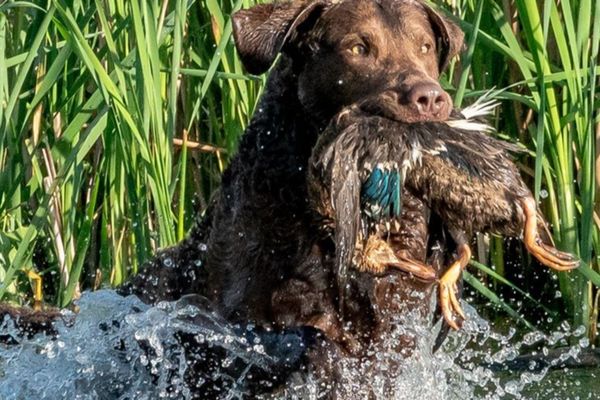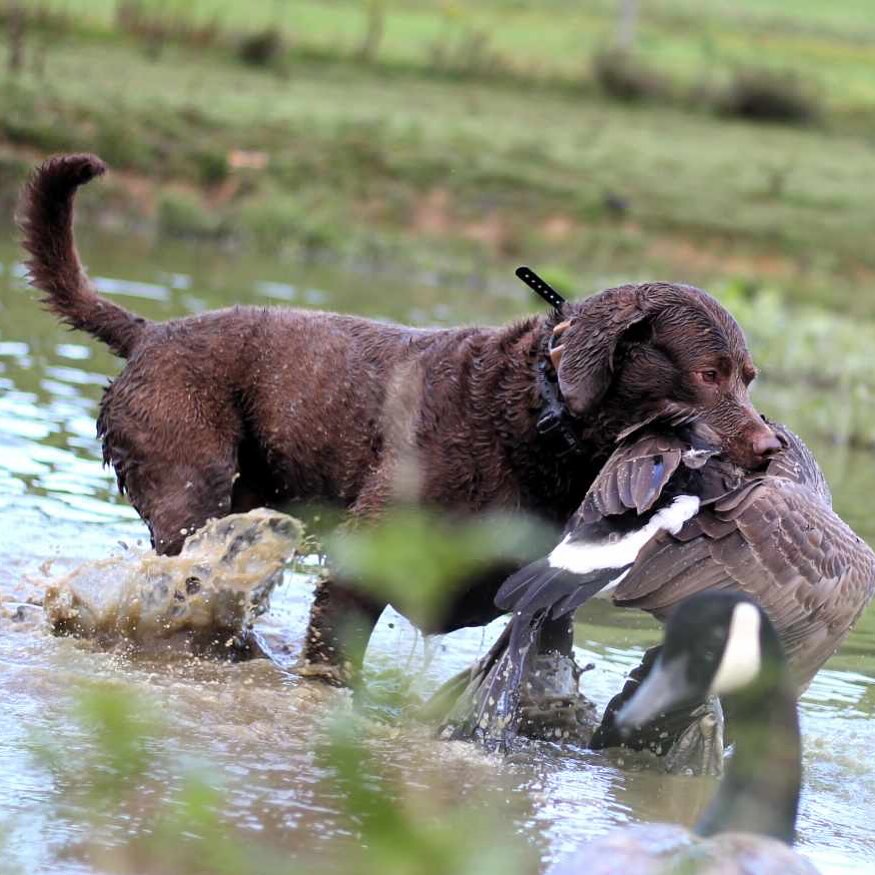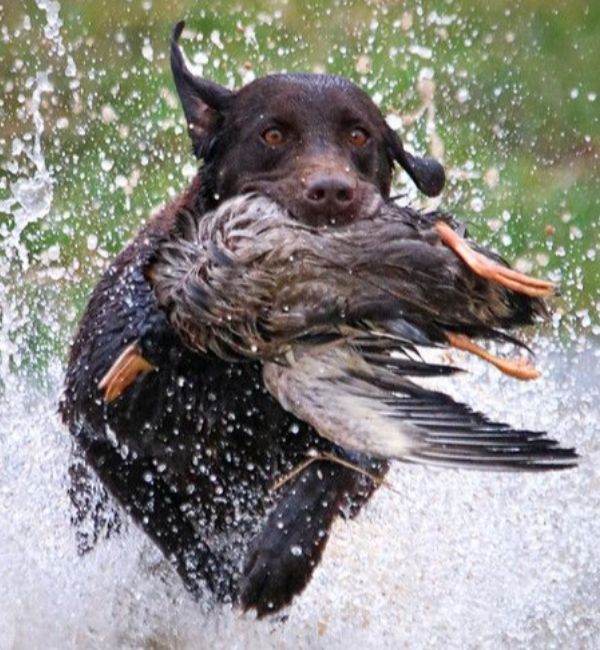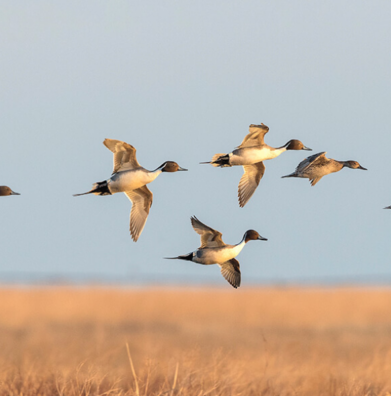With a 3 to 4 foot rise and fall of the tide, what was nice open water at sunrise, can become a mud flat or piece of oyster rock by 9 am. The safest areas to work your dog are tidal marsh ponds or from a boat or poll blind in open water. The most you will encounter when hunting the ponds is low marsh grass on your way to the blind. Any cuts occurring during this walk, will be very minor.
These marsh ponds are seldom more than one foot deep and although they typically have a soft bottom, there is enough water to keep your dog from getting bogged down in the mud. Some of the best action occurs out in the open bay. You will need a poll blind, floating blind or boat to hunt these waters.
A pole blind is usually the most desirable because it is a stationary platform. It doesn’t rock with the waves or shift location with the tide, but you will need a dog platform to compensate for the rise and fall of the tide. Floating blinds can be very dog friendly. If designed correctly, the deck of the blind should be at or near water level when you move to that side to recover your dog.








